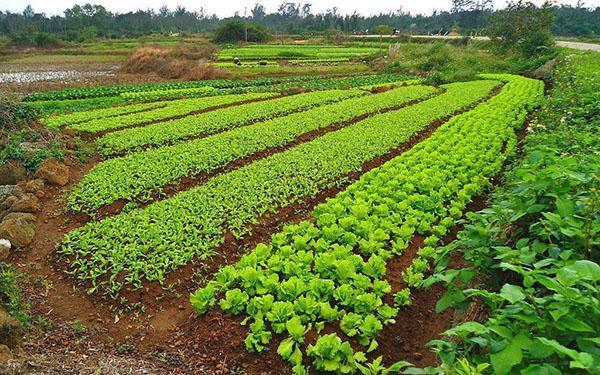Crop rotation and combined planting - yield control system
 Many are outraged that every year there are more pests / diseases in the garden, and the yield is less. They are simply not familiar with the magical planting technology - crop rotation and combined planting. What is it, what is the use and how should it be properly implemented on your site?
Many are outraged that every year there are more pests / diseases in the garden, and the yield is less. They are simply not familiar with the magical planting technology - crop rotation and combined planting. What is it, what is the use and how should it be properly implemented on your site?
Disappointing consequences
Sowing the same crops in one place from year to year, the owners destroy them with their own hands. Plants are able to defend the territory, releasing toxic substances into the soil - viburnum. Moreover, each culture has different taste preferences. Certain varieties from the earth absorb certain elements. As a result, the soil becomes depleted, and the fertility decreases several times. The yield is also affected by pathogenic spores / diseases, which accumulate in the garden every season.
Pests that are used to vegetables become permanent residents of the site. As soon as spring comes, the insects / larvae multiply intensively as they have something to feast on.
Therefore, it is necessary to replace one culture with another. This is the essence of crop rotation. However, they are not planted as needed, but according to a certain scheme. Of course, the gardener will need to draw up plans and schemes in order to achieve the desired result. It should be understood that all plants are divided into:
- demanding (like to eat);
- legumes (saturate the earth with nitrogen-containing compounds);
- Strawberry;
- roots.
Changing places of the given groups of fruit plants, it is worth taking into account their properties, growing time, as well as relatives and predecessors.
Alternatively, use sideratesimproving the soil. They are sown after harvest or in early spring. For example, mustard is planted, which serves as mulch.
Invaluable experience - crop rotation and combination planting
A variety of landings - not only a beautiful picturesque picture at a summer cottage, but also saving space. This combination protects vegetables from pests. The owner receives the harvest several times per season. The fruits are much tastier, brighter, more aromatic and richer. Fertility increases 5 times. Although there are no specific rules, it is still better to use time-tested combinations:
- Garlic is planted in winter. With the onset of spring, celery and beets are added to it, in the leaves of which it will feel comfortable. Dill rises with them. In August, lettuce leaves are sown and daikon.
- Asparagus beans and legumes get along well with eggplants. Thyme is needed around the edges.
- In the middle there is a trellis with cucumbers. Carrots are placed in a row on both sides, followed by salad and onions. Distance - 30 cm.
- Corn is planted in 2 rows, along the stalks of which cucumbers will trail. Supplement the tandem with legumes to saturate the soil with nitrogen. Early cabbage comes along the edge to enhance the flavor of the vegetables.
- Garlic, cabbage, radishes, onions, spinach or beets are distributed in the strawberry garden.
- A mix of peppers and tomatoes. The edging of the site is made of basil, marigolds and carrots. You can replace them with beets, lettuce, early cabbage, beans, celery, spicy and medicinal herbs. Dilute everything with herbs: dill or parsley.
- The central zone is peas on a trellis. On the reverse side are planted cucumbers and beans, cabbage, onions, and radishes. Fennel is added in combination with spinach.
- New potato varieties are placed between corn, beans, peas and watermelons.
Combining cultures is fun and exciting. It is important to know that salads are demanding plants, they love to eat. Beans and beans - saturates the soil with fertilizers and protects against Colorado beetles. Corn serves as a support. Pumpkin prevents weeds from growing.
The main thing is to plant the main culture, and all the rest will be either additional or substitute.
So, crop rotation will help the gardener control the fertility of his crops and prevent the development of diseases. At the same time, the number of pests will decrease.
It is highly advisable to indicate the area for the application of your recommendations. We have a dacha north-west of Minsk, and you can't plant garlic in winter! Thank you!